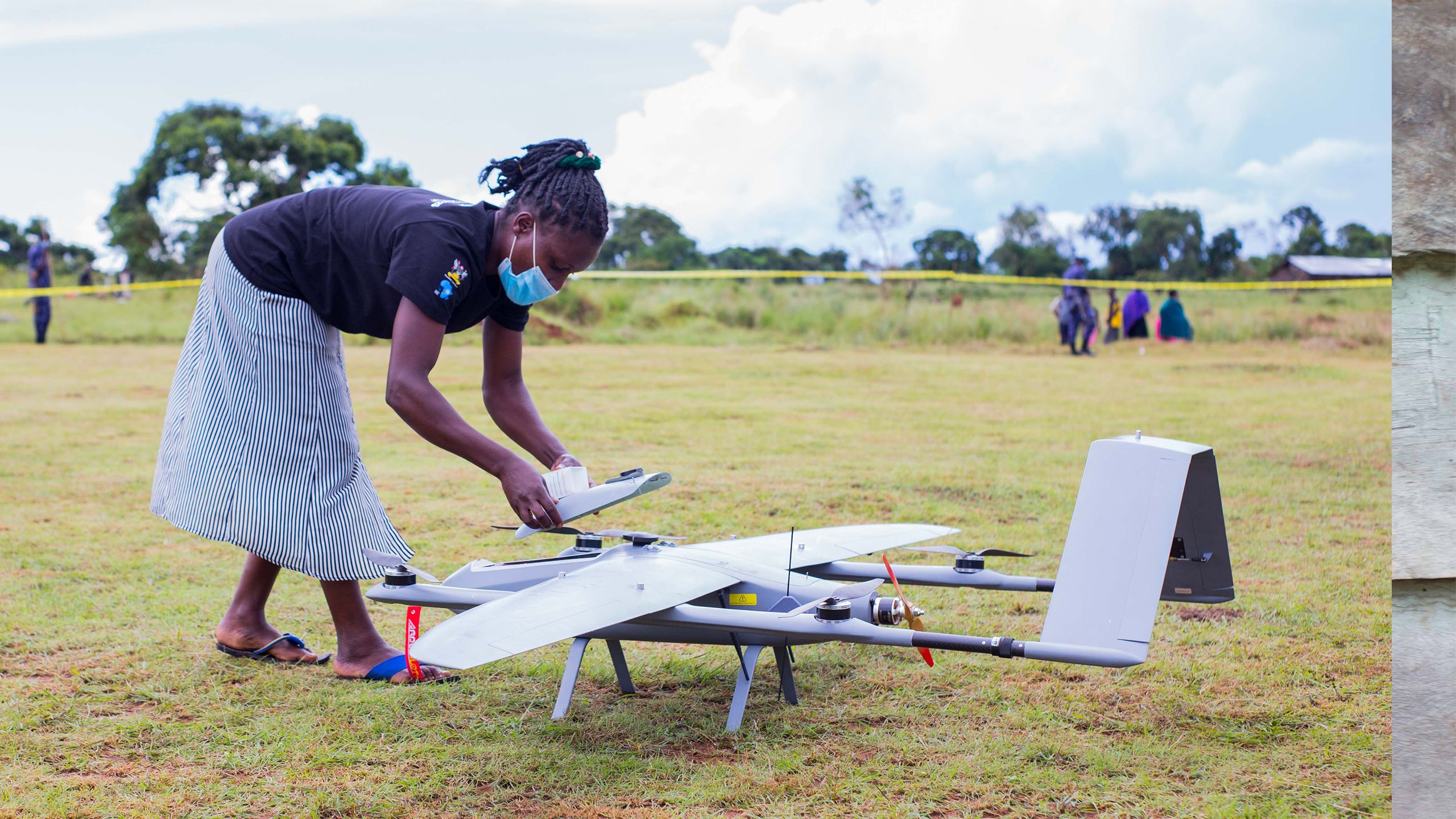The sky’s the limit: Drones delivering HIV supplies in remote Uganda
How are drones being used to transform HIV care for one Ugandan district? From Kalangala, Devex takes a look.

On what would usually be a quiet Wednesday morning for the residents of Bufumira island, in the Kalangala district of Uganda, a crowd has gathered to watch as the island’s medical officer, Dr. Jude Matovu, strides onto a soccer field next to Bufumira’s scantily equipped health centre. Stethoscope draped around his shoulders, he places a bottle of 30 tablets in the cavity of a drone. Signals beep, propellers whir, and the unmanned vehicle launches into the sky, quickly disappearing beyond the treeline.
While drones may have become novelty toys for many, here — together with the upskilling of local community members to operate the drones — they’re providing a lifeline in delivering HIV medicines to other nearby islands.
This is the first drone flight as part of Kalangala’s medical drones research project. The idea is that medicines — arriving from the mainland by boat — will be transported from Bufumira Island to more remote locations by drone.
The initiative aims to assess the effectiveness and impact of drone technology — teamed with community-driven care — in delivering HIV medications. The goal is to improve the provision of health care to the 70,000 inhabitants of Kalangala district, an archipelago of 84 islands — some heavily populated, others uninhabited, and all thickly forested — on Lake Victoria, a great expanse of fresh water shared between Uganda, Kenya, and Tanzania.
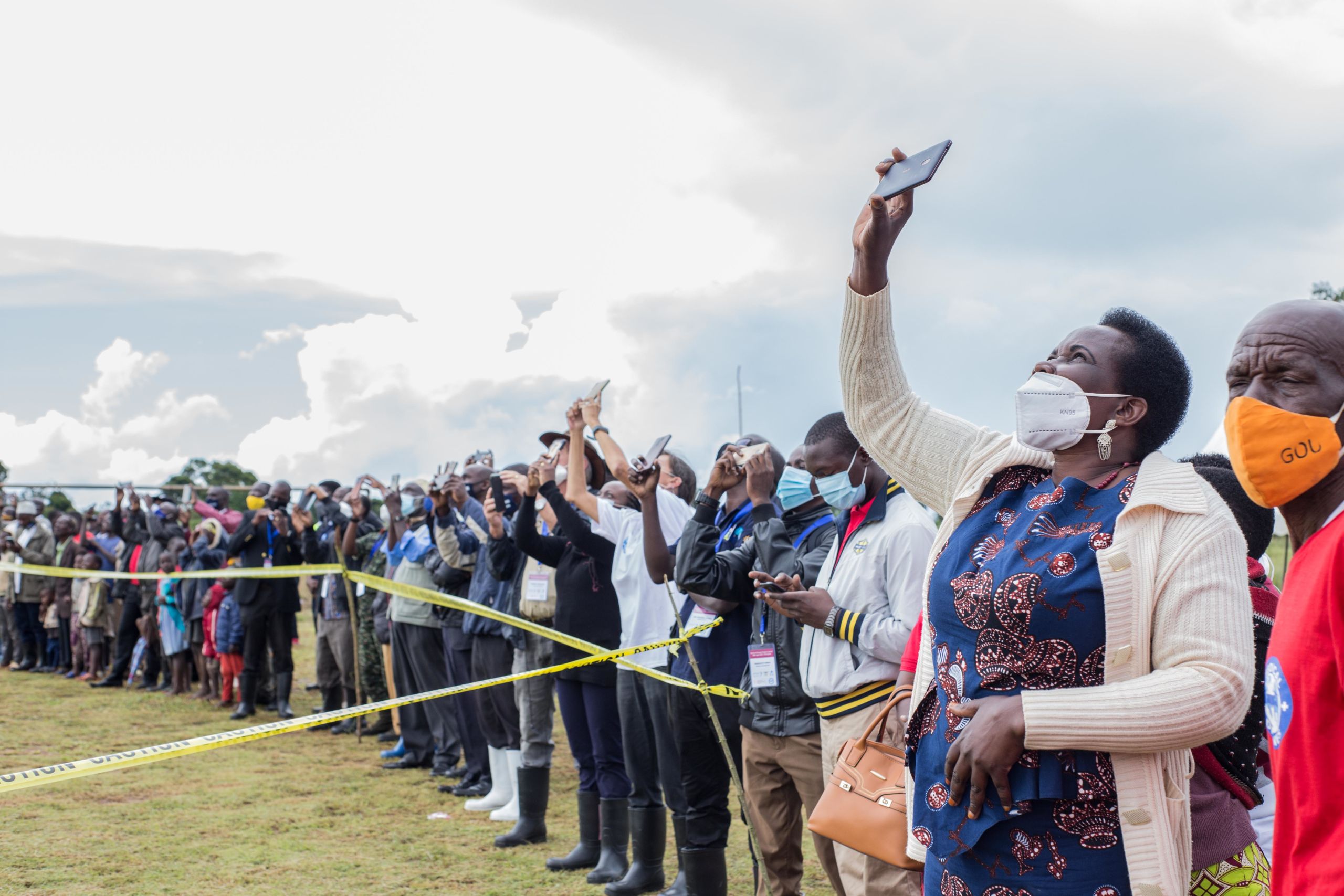
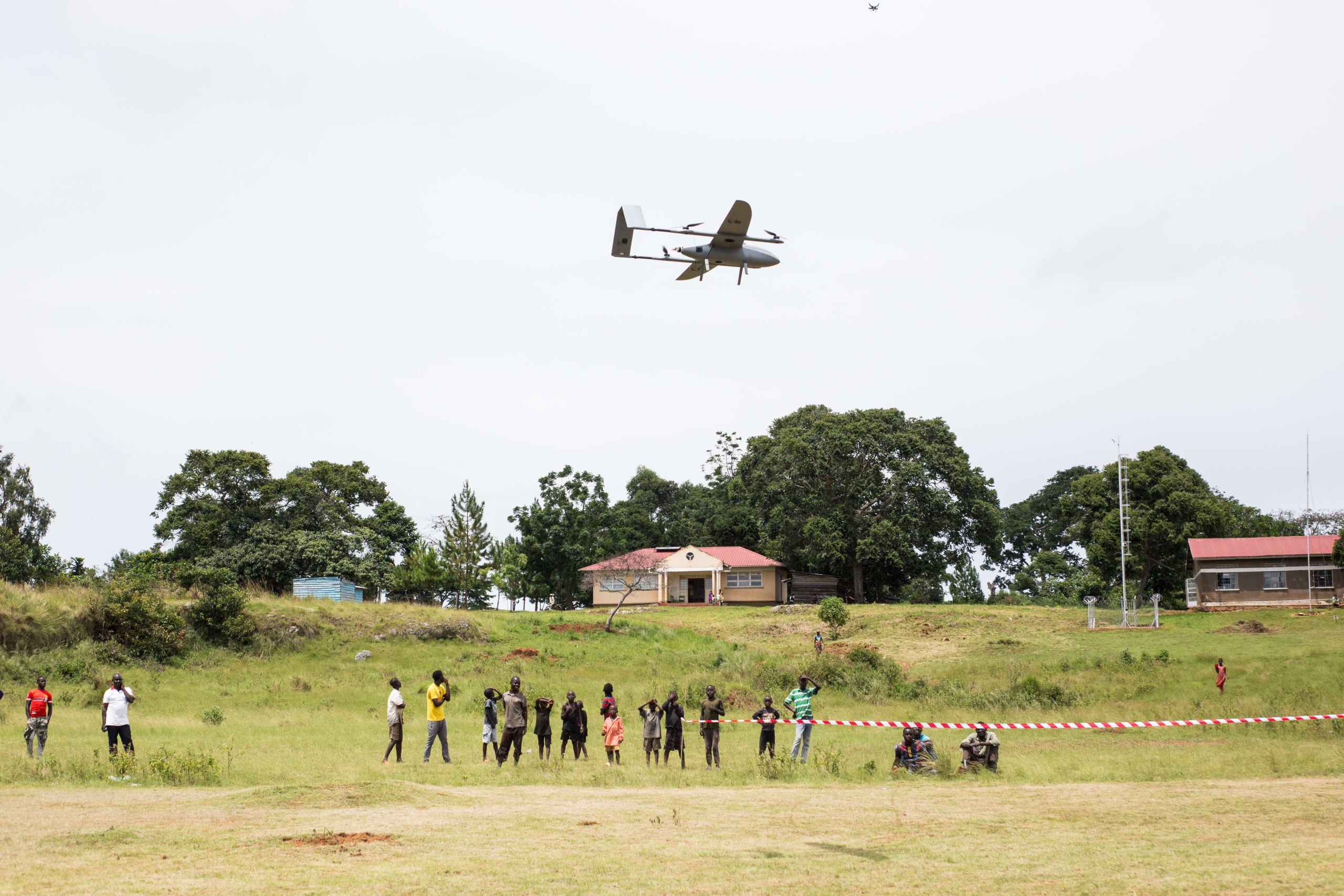
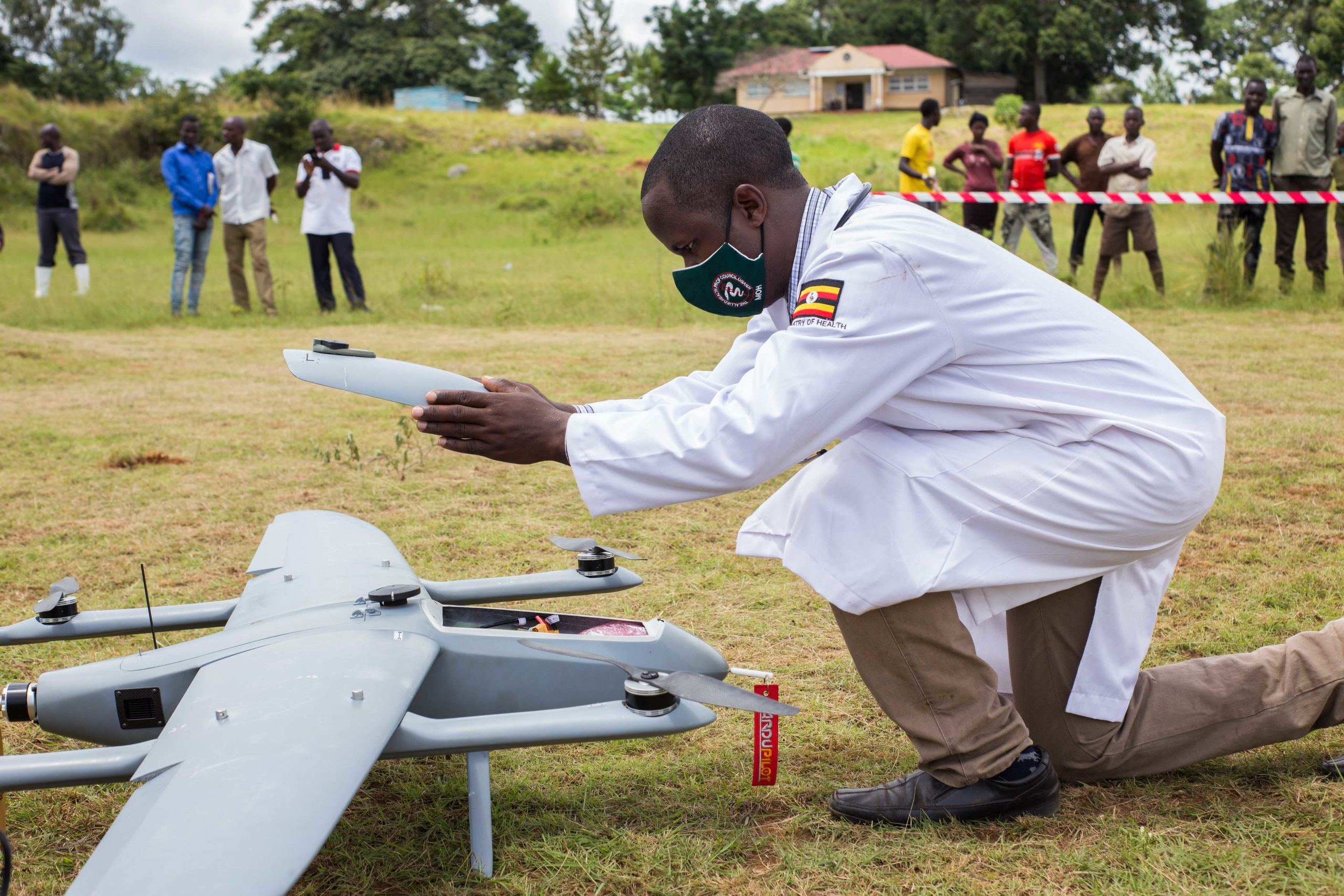
Dr. Jude Matovu, medical officer on Bufumira island, places a bottle of 30 tablets in the cavity of a drone.
Dr. Jude Matovu, medical officer on Bufumira island, places a bottle of 30 tablets in the cavity of a drone.
Across the archipelago, HIV cases remain stubbornly high despite concerted efforts over the years to bring Uganda’s overall prevalence rate down.
Dr. Rosalind Parkes-Ratanshi explains how the use of medical drones could help Uganda reach its 95-95-95 HIV targets.
“HIV prevalence in most of Uganda has really declined over the last 20 years,” said Rosalind Parkes-Ratanshi, director at the Ugandan Academy for Health Innovation and Impact. “Places like central Kampala are around 7%, yet the islands have remained at a very high prevalence rate of around 27%.”
Rose Nakavuma, 50, has lived on Bufumira Island all her life. In 2014, she began feeling unwell and struggled to tend her smallholding, where she grows cassava and green bananas. At Bufumira Health Centre III, she tested positive for HIV and immediately began a course of antiretrovirals, or ARVs.
She shares the view of academic researchers that Kalangala’s transient population is a factor contributing to the community’s high levels of HIV.
Fishing dominates Kalangala’s economy, and local fishers follow shoals of fish moving between the sprawling islands, setting up temporary homes wherever the chase takes them. It’s thought that the HIV prevalence among the fishers, although hard to discern, is high.
UNAIDS has set the global “95-95-95” targets to help end HIV as a public health threat worldwide by 2030, aiming for 95% of people living with the virus knowing their HIV status, 95% of those who test positive having access to care, and 95% of those who are in care being virally suppressed. Uganda, and Kalangala district in particular, are far from reaching these.


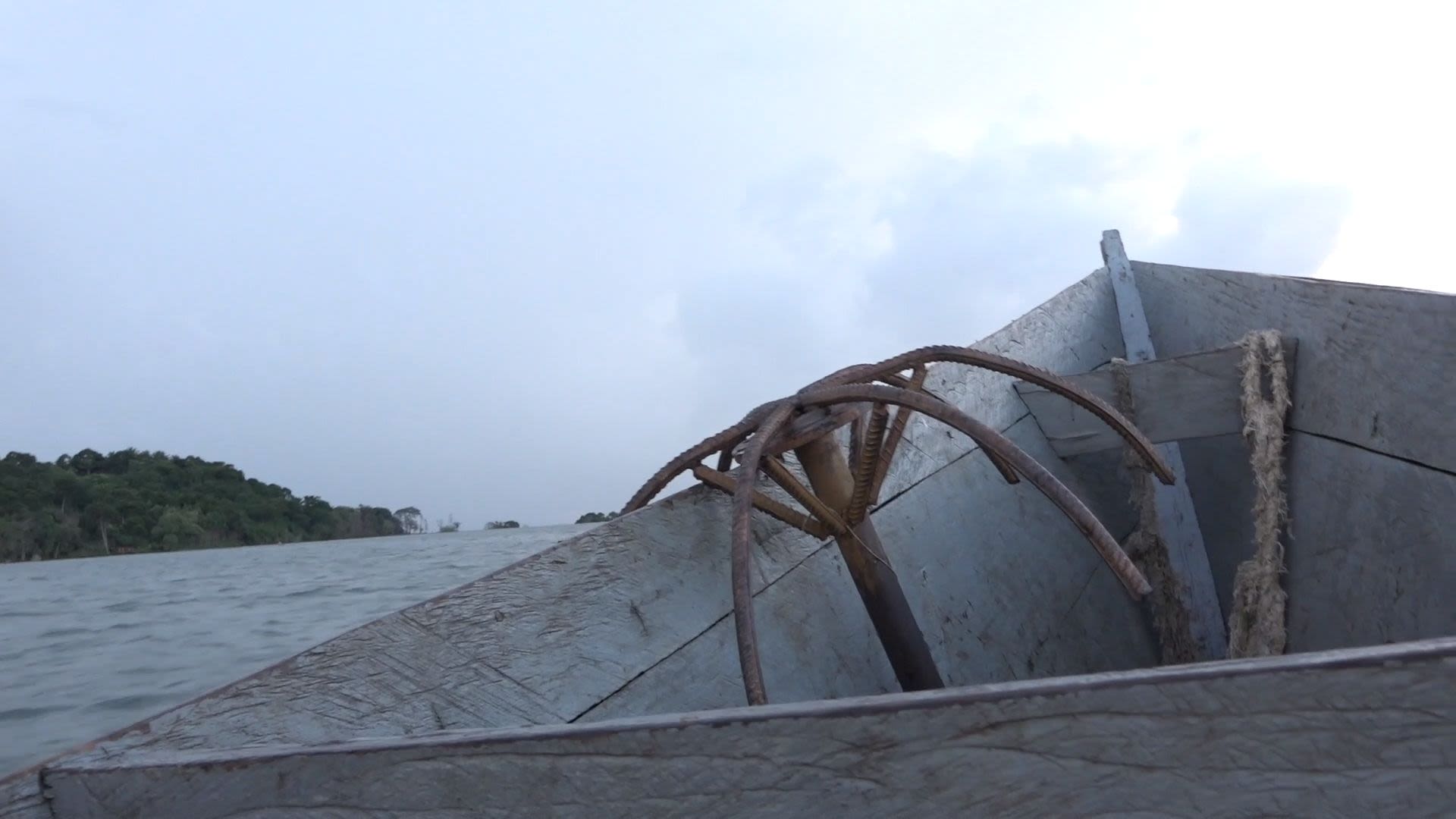


To reach Bufumira Island in particular, travelers must take a two-hour ferry ride from mainland Uganda to Kalangala town on the biggest island of the group and then shift to a large, motorized canoe for an additional journey of around 20 minutes.
To reach Bufumira Island in particular, travelers must take a two-hour ferry ride from mainland Uganda to Kalangala town on the biggest island of the group and then shift to a large, motorized canoe for an additional journey of around 20 minutes.
Fishing dominates Kalangala’s economy, and local fishers follow shoals of fish moving between the sprawling islands.
Fishing dominates Kalangala’s economy, and local fishers follow shoals of fish moving between the sprawling islands.
Academic researchers believe Kalangala’s transient population is a factor contributing to the community’s high levels of HIV.
Academic researchers believe Kalangala’s transient population is a factor contributing to the community’s high levels of HIV.
While the district has 15 health centers, the time and cost of traveling to one can be a deterrent to seeking care.
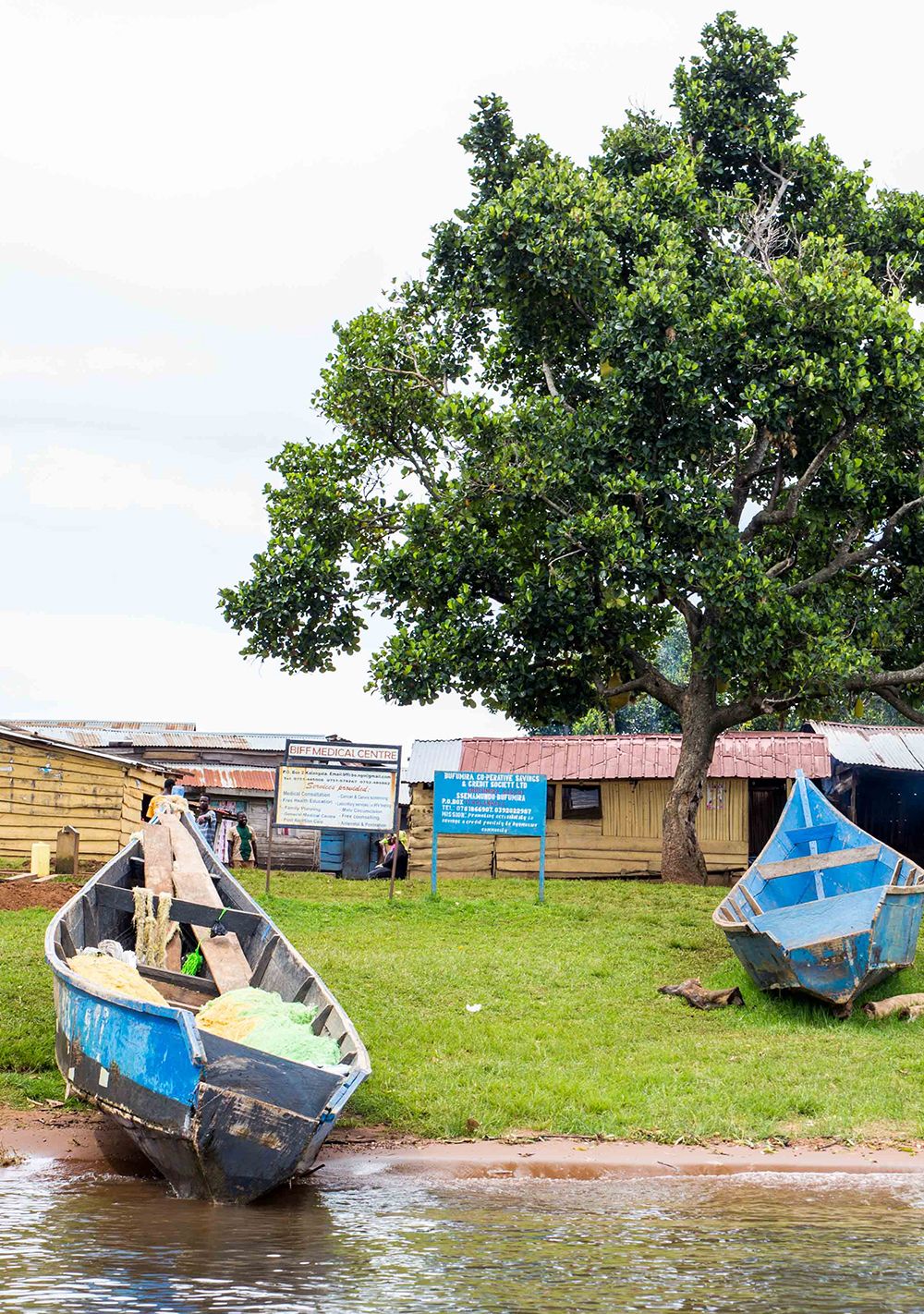
While the district has 15 health centers, the time and cost of traveling to one can be a deterrent to seeking care.
To reach Bufumira Island in particular, travelers must take a two-hour ferry ride from mainland Uganda to Kalangala town on the biggest island of the group and then shift to a large, motorized canoe for an additional journey of around 20 minutes. Reaching the more remote islands costs between $5 and $10 due to the high price of fuel and takes roughly one to two hours to travel 5 to 10 kilometers (3 to 6 miles), depending on the weather.
Kalangala district experiences two rainy seasons each year and equatorial heat punishing passengers — including the health care workers delivering medicines — who are caught on the lake with rough water in the middle of the day. “Very many times, we have failed to go to the landing sites [on the beach for boats] when it rains heavily,” Matovu said.

While the district has 15 health centers, the time and cost of traveling to one can be a deterrent to seeking care.
While the district has 15 health centers, the time and cost of traveling to one can be a deterrent to seeking care.
COVID-19’s travel restrictions and social distancing measures have put additional strains on the area’s health infrastructure and further jeopardized access to HIV diagnosis and treatment.

Jude Matovu, in-charge at Bufumira health center III.
Yet without regular ARV deliveries to the islands and time for counseling, treatment adherence rates can fall, exposing islanders to the risk of infection and increasing the likelihood of resistance to the HIV medications. If drug resistance occurs, a patient must transition to second- or third-line treatment regimens, which are more expensive to maintain and come with increased pill burdens.
Without finding a way to overcome the geographic and logistical challenges, achieving UNAIDS goals and eradicating HIV remain out-of-reach targets for Uganda.

Jude Matovu, in-charge at Bufumira health center III.
Jude Matovu, in-charge at Bufumira health center III.
A solution in the sky
Kalangala district’s medical drones project could be a solution. Funded by Johnson & Johnson, it was thought up by Parkes-Ratanshi, who said drones can make deliveries to small geographic areas in a short amount of time and could be a cost-effective approach for the district.
With further support from IDI and Johns Hopkins University’s medical drones team, as well as approvals from Uganda’s Ministry of Health and Ministry of Defence and Veteran Affairs, Parkes-Ratanshi decided to target refills of ARVs — medication that is available through the Health Ministry — in the project’s initial phase. After local landowners agreed to let drones land on their land, she formed eight peer support groups for 74 patients who consented to take part in a trial.
“The idea is that each of those peer support groups will be getting a monthly refill of their ARVs, so that will be eight flights per month to those peer support groups,” Parkes-Ratanshi said, smiling at the possibility that patients would have regular access to lifesaving medication.
For Matovu and Nakavuma, the first flight offered encouragement. “This drone is going to make a very big difference because it can carry the drugs even if it is raining, even if it is windy,” Nakavuma said.
Following the first flight, data will be gathered to assess just how impactful using drones as HIV delivery vehicles can be and whether it improves HIV rates in the district. The project needs to be rigorously tested before a decision can be made about fully incorporating it into the public health system, Parkes-Ratanshi said.
“We've done a baseline survey to find out how many personal drug stock-outs those patients have had, how many times in the last year they've missed drugs, and we want to look in a year's time if we've managed to have an impact on that,” she said.






According to the internal survey, the use of drones could reduce the amount of time that health care workers spend on drug refills, prevent patients from missing outreach activities due to weather or limited funds, limit personal and clinical ARV shortages, and improve ARV redistribution between health facilities.
The hope is that the project will help Uganda reach the 95-95-95 targets by increasing access to medications and diagnosis, according to Robert Kimbui, senior manager of the global public health supply chain at J&J.
Robert Kimbui, senior manager for global public health supply chain at J&J, explains the benefits the use of medical drones will bring to health workers in Kalangala district.
“With the first 95 of having increased diagnosis, we'll be able to identify more patients who are HIV-positive. And with [an] increase in access to medications, we will be able to put more people who have HIV onto treatment,” he said. “And when we have consistent treatment of these people who are HIV-positive, we will achieve the third 95, which is ensuring viral suppression, which is critical in ensuring that HIV is properly managed.”
To ensure that the project has the best chance of being sustainable, Kimbui said the plan is to train local community members to manage the drone flights. And the next step is to begin regular deliveries at three landing sites, with the aim of expanding to 10 and broadening the cargo from medication to blood samples, linking communities to testing labs and perhaps even COVID-19 vaccine distribution.
Parkes-Ratanshi and Kimbui are already considering how the lessons learned in Kalangala district may be shared elsewhere. “This technology can be used in different areas, mountainous regions, or [areas of] political instability. But that said, it's a very highly regulated technology, so you’d really need to have buy-in from all the key stakeholders’” Kimbui said.
“We’re already thinking about taking the project to another part of Uganda, to the West Nile region. And the drone network around Africa are all in a similar state of learning, and there are forums in which to share this information,” Parkes-Ratanshi said. “We really hope that by using it as a research project, we will get high-quality data that will be able to move the needle forward on [drone-delivered medications].”
